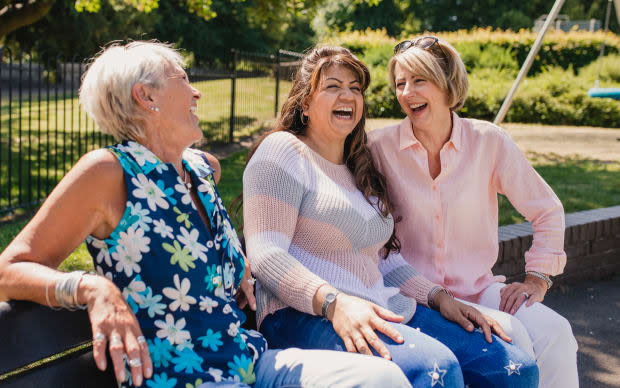5 Super-Basic Life Skills I Didn’t Learn Until I Was 50 Years Old—That You Might Not Know Either
If only we were taught these skills alongside spelling and math!

iStock
Most of us pick up basic adulting skills along life’s way, like doing laundry and scrambling eggs. Some of us even master the finer points of table manners or changing a tire. But what about the stuff that nobody ever teaches you? It wasn’t until a string of late-life lucky encounters with fitness gurus, therapists and other experts that I even learned there was a “right” way to stand, walk, smile and breathe. Here’s what I found out.
How to breathe
Most of us get through the day on fairly quick, shallow breaths. The better way? Deeper. Bring air down into the belly, through the nose. How you know it’s right: Instead of your chest rising and falling, your belly will go out, as the diaphragm contracts to give the lungs more room to fill, then in. “Belly breathing” brings in more oxygen, and it’s better for your lungs and can lower tension.
Related: Joan Lunden Is Changing the Conversation About Aging—and No Topic Is Off Limits
How to sit
I didn’t expect to start physical therapy for a bum back by being told to have a seat. “Now, without using your arms, stand up,” said Kendra Melson, founder of KineticWise Sports and Medical Massage clinic in Fort Collins, Colorado. She watched me hunch and wobble. I reached for the chair arm anyway. Turns out I was doing this thing 100 times a day... wrong! Melson demonstrated the magic of first planting my feet, then using my thighs, butt and abdomen—not my arms—to power me up and back down. The improved stability and strength were unmistakable, and I’m sitting proof that consciously practicing makes you stronger, and becomes second nature.
How to stand
Pre-Melson, I stood like a crooked stick. Now I position my feet right below my hips. Then I put 60 percent of my weight in the heels and 40 percent in the toe box area (from the ball of your big toe across to the ball of your small toe). Together, this area and the heels form a tripod to hold you up. From this solid foundation, with my knees rotated out ever so slightly, the rest of my body can naturally and properly stack above, shoulders above pelvis. It’s amazing how my back has stopped aching when I wait in long lines.
How to walk
On a group wildflower hike, the guide, also a fitness coach, suggested I keep my shoulders down and back (meaning not up by my ears!) and strike my steps from heel to toe. Then, for better balance, which produces more energy, swing my arms straight out, coordinating the movement so that the right arm is in front when the left leg is in front, and vice versa.
How to smile
At a medical conference I once covered, the speaker, a psychologist, asked the audience to smile. Turn up the corners of your mouth, she said, even if it feels fake. A few hundred professional skeptics did—and the mood in the whole place lifted. A meta-analysis of dozens of studies confirms the finding. Smiling can’t cure your sickness or your broken heart. But for a brief moment, the very act of moving your mouth muscles into an upward curve tricks your brain into “reading” you as happy, igniting chemical changes that then make you feel so. Turns out, you don’t have to wait until you feel like smiling to smile—once you put one on your face, that happyish feeling will follow. To think that for 50 years, I thought it was the other way around!
